These Two Men Are on a Mission to Save CrossFit
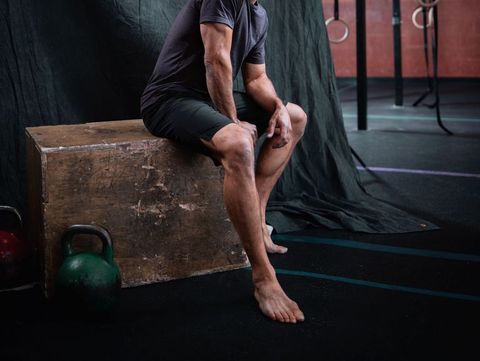
On June 27, 2020, Eric Roza masked up and flew from Boulder, Colorado, to San Jose, California, where he rented a car and began driving south. A tech entrepreneur who made his name and fortune with a data company he sold to Oracle for $1.2 billion in 2014, Roza, 53, had just spent, according to one source, $200 million buying CrossFit Inc., the largest fitness chain in the world, somewhat bigger than Dunkin’ and somewhat smaller than Domino’s. At its peak, you could have found one of the more than 15,000 CrossFit affiliates at most latitudes and longitudes around the world—in Nuuk, Greenland; in Ulaanbaatar, Mongolia; in Païta, New Caledonia; in Gillette, Wyoming. Roza had big ideas that he believed could radically change the brand. And despite the Starbucks-level ubiquity of CrossFit boxes and the titanic role the company has played in the functional-fitness boom of the 21st century, CrossFit needed to change—desperately.
After 50 miles, Roza turned off Highway 101 and onto a dirt road leading to a hilly 65-acre ranch anchored by a warehouse filled with squat rigs, barbells, med balls, rowers, and more. This was the CrossFit Ranch in Aromas, California, made famous as the site of the first CrossFit Games, which have tested the bodies and minds of the world’s fittest masochists since 2007. Ruling over this sprawl was Dave Castro, 43, the director of the Games, who is widely considered the architect of the CrossFit ethos. He had built the company alongside founder Greg Glassman, creatively translating Glassman’s elegant formula for fitness—“perform constantly varied functional movements at high intensity”—into public displays in the CrossFit Games and, probably, in some CrossFit workout of the day you ripped off the Internet once.
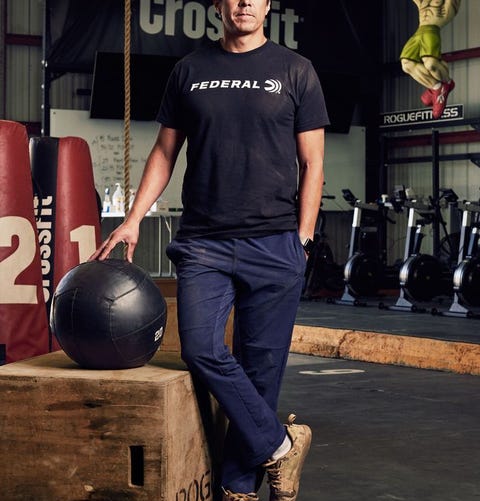
The two had been the equivalent of Jobs and Woz. Glassman the brilliant but mercurial big-idea guy, Castro the fastidious engineer and executor. And things at CrossFit were great. Then fine. Then not very good at all, which is why, at the time of Roza’s visit to the ranch, Castro was finishing up a short stint as the company’s CEO and about to have a potentially awkward conversation with his new boss and CEO.
“I wasn’t sure how Dave would respond,” says Roza. (Picture a Colorado-y Jason Statham who includes “he/him” in his email signature and shops at Whole Foods.) “[Castro] is a hard-ass. He’s lived in the world of the Navy SEALs and CrossFit his entire professional career.” Castro was the type of person who was CrossFitting when CrossFit was a garage gym that had a shitty website blasting unconventional workouts and training theories into the universe, a sort of fitness SETI experiment. This was all well before grandmothers and Matt Damon started doing WODs. But Castro knew that his beloved brand needed an overhaul.

Its trajectory was plateauing, growing 11 percent from 2016 to 2018, versus 60 percent from 2012 to 2014. So was participation in the CrossFit Open, an elimination contest for the CrossFit Games that anyone can enter. It went from roughly half a million athletes in 2018 to about 350,000 and 240,000 in 2019 and 2020, respectively (and the Open finished months before the pandemic struck). By April 2020, COVID-19 lockdowns had closed 89 percent of affiliates worldwide. Then on June 3, Alyssa Royse, who owned Rocket CrossFit in Seattle, wrote a letter.
Royse had run her CrossFit box for nine years and, due to her work counseling the brand on trans inclusion, had been dubbed by members of leadership “the conscience of CrossFit.” In her 2,700-word letter to CrossFit leadership, she conveyed that Rocket CrossFit was unlikely to renew its affiliation, since the brand’s hands-off approach to business was no longer working. The pandemic was in full swing and a social-justice movement was sweeping across the country, and through it all, CrossFit had been silent. “The absence of real leadership didn’t matter much when the world wasn’t in crisis. But it matters now, a lot,” Royse wrote. And over recent years, CrossFit had displayed, she wrote, “incoherent brand identity that is losing value, absent leadership at a time when leadership is most important, and a moral ambiguity that doesn’t jibe with the zeitgeist or our own values.”
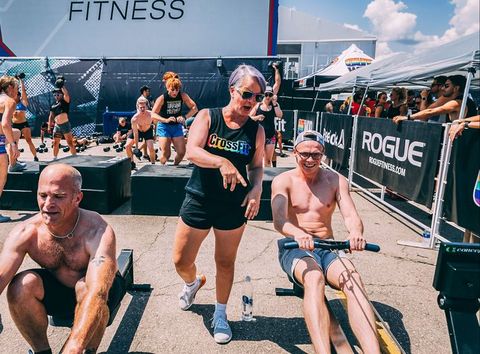
“I’d had very open dialogues [with CrossFit corporate] about pretty much everything,” she says today. “And I sent the letter in that spirit.” Glassman responded two days later. “You think you’re more virtuous than we are. It’s disgusting,” he wrote. “You’re doing your best to brand us as a racist and you know it’s bullshit. That makes you a really shitty person.”
On June 5, Royse published her email and Glassman’s response.
So began Glassman’s meltdown. Over the next four days, he would write an offensive tweet (belittling the pandemic and the death of George Floyd as “Floyd-19”) and BuzzFeed would publish audio from a Zoom call in which Glassman says, “We’re not mourning for George Floyd. Can you tell me why I should mourn for him? Other than that it’s the white thing to do . . . .”
“When that came out, I was like, ‘Oh, we’re not supporting this at all anymore,’ ” says two-time Games competitor Elijah Muhammad, one of the sport’s most prominent Black athletes and the owner of the Iowa-based box Unorthodox Fitness, which de-affiliated immediately.
Reebok, Rogue Fitness, and many other companies quickly announced they would end their partnerships or relationships with CrossFit. So did superstar athletes like Chandler Smith and Rich Froning Jr. “I was leaving money on the table, but I couldn’t ethically support CrossFit anymore,” says Smith, who is Black. Froning, who is white, announced on Instagram that he “cannot and will not stand with these comments or beliefs.” A list of nearly 500 boxes de–affiliating or considering de-affiliating circulated around the CrossFit community.
Glassman stepped down as CEO on June 9. Castro replaced him and immediately issued an open letter promising to fix HQ and create programs to effect positive change. Many CrossFitters, Muhammad included, didn’t think the brand’s issues could be solved so long as Glassman maintained full ownership.

Then, on June 20, The New York Times published a story detailing how women at the company were systematically mistreated and faced “lewd assessment of their bodies.” On June 24, Roza announced that he had teamed up with an investment firm, Berkshire Partners, and bought CrossFit from Glassman. Roza had actually first eyed buying CrossFit in 2013, after getting hooked on the workouts and building a CrossFit box for employees at his tech firm. “Glassman would never sell” was the response he received. But the mistake of one rich guy led to an opportunity for another, and Roza had his shot.
Immediately after the paperwork went through, Castro and Roza, who had never met in person, held a Zoom call streamed over YouTube Live to the CrossFit community. Castro opened by acknowledging the recent turmoil before introducing Roza, noting that he owned an affiliate, CrossFit Sanitas in Boulder, and had been doing CrossFit for a decade.
To save the brand, Roza believed it needed to evolve and be more like Roza himself: techy, corporate, progressive, and woke. In the 27-minute stream, he talked business and let everyone know there was no ambiguity: “We are committed to being a really broadly inclusive community.”
But whether those 500 or so CrossFit affiliates and famous athletes would return to Roza’s evolving CrossFit was anyone’s guess. Roza needed an ally. Someone to signal that the brand would, yeah, maybe be a bit more sensitive but would remain ruthless when it came to the training methodology. But would a hard-charging, gun-loving SEAL be the right fit for the new, more kumbaya CrossFit?
The 2020 CrossFit Games were just a couple weeks away when I, like Roza, went to the ranch to speak with Castro. We spent an hour rucking a trail that winds three miles through hills and gullies and were blurting sentences through heavy breaths as we climbed out of a ravine.
Castro, who is a skinny-strong six feet tall, told me he tried CrossFit as an active-duty Navy SEAL in 2005 and immediately saw many benefits. “I had a ton of endurance hiking and was more explosive on targets.” The Navy then stationed him in Monterey, California—a 45-minute drive from both his home and Glassman’s original CrossFit gym. “I just started volunteering for stuff. I had an official role within seven months.”
CrossFit was always run like Burning Man. Anyone could attend a $1,000 two-day certification, then pay a $3,000 annual fee to license the CrossFit name and put it over their gym. Corporate’s role was to license the name, hold training-certification seminars, and defend the trademark at all costs.
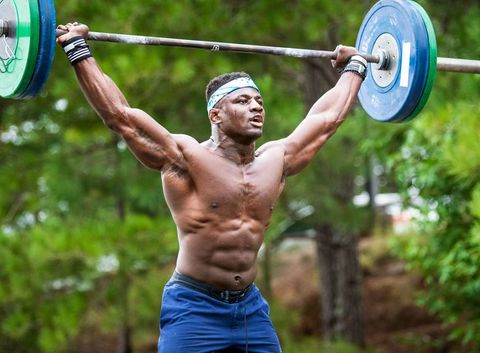
But it offered a strong value proposition to gym owners. It takes an estimated $30,000 to open a CrossFit gym, while big-box gyms require an initial investment of $1 million to $4 million. The benefit to CrossFit members was that for anywhere from $100 to $300 a month, they’d receive professional coaching, make a bunch of new friends in group workouts, and get freakishly fit. By 2007, CrossFit had 250 affiliates.
“Which is when [Glassman] came to the ranch,” says Castro. “He said, ‘We should have a Woodstock of fitness here.’ ” Castro, the military man with a creative streak, was tasked with designing and running it. The annual Games set CrossFit apart from other fitness methods, attracting new members to boxes and giving CrossFitters a reason to train harder and test their fitness. It also bred a sense of shared purpose—like a sweatier church. Researchers at the Harvard Divinity School report that CrossFit for many is replacing traditional faiths by “blending a sense of community and self-awareness in resemblance of religion.”
By 2011, CrossFit had 3,000 boxes and 26,000 people competing in the Open. That year’s Games were held at a packed Home Depot Center in Carson, California, and broadcast on ESPN, and CrossFit had inked a ten-year sponsorship and athletic-wear deal with Reebok. “That’s when I realized [CrossFit] was going to be huge,” says Castro.
Glassman owned 100 percent of the company, had no board of directors, and was “a fighter by nature. He thrives on conflict and friction,” says Castro. Detractors? Tons. CrossFit was the fitness equivalent of Donald Trump, Duke basketball, or pineapple pizza. You either loved it or hated it. Glassman’s response to the haters: “There are whole communities, they just hate my fucking guts. And, you know, that’s something I’m proud of. Why? ’Cause they’re losers. They’re fucking idiots. Obvious idiots,” he told Outside in January 2020. (Glassman could not be reached for comment.)
But Glassman’s bravado, until recently, only cemented CrossFit as something hard and authentic in an increasingly soft, censored world. By 2014, there were 10,000 boxes and the money was flowing in. He started spending most of his time out enjoying himself, says Justin LoFranco, founder of the Morning Chalk Up, a CrossFit news outlet. A private plane, mansions, souped-up cars, etc. Castro, meanwhile, stuck to his mission of perfecting the Games.
The CrossFit Open and Games events drew inspiration from Castro’s varied interests—classic literature, theater, firearms (a point of criticism), and more. He evolved into the public face of CrossFit corporate, gathering more than 750,000 Instagram followers for the Games.

Eventually Glassman got jealous, unceremoniously fired Castro’s handpicked media and operations staff overnight in 2018, and downgraded the Games, instead focusing the company’s resources on general health. Numbers at the Open fell, and in 2019 the games lost CBS as an official broadcaster.
Some of Glassman’s decisions seemed erratic and deleterious, says Andre Crews, owner of 150 Bay Fit in Jersey City (which de-affiliated following Glassman’s comments). After Glassman axed community–building regional events, he also abruptly shuttered the brand’s Facebook and Instagram accounts. “It turned to this radio-silent organization who was just taking money from you,” says Crews.
Castro and I were still in our workout clothes as we sat at Dona Esther’s Mexican restaurant in San Juan Batista. He was telling me about his monthlong tenure as CEO. “I was getting hit with claims that I was complicit in racism and that CrossFit headquarters had a problem with diversity,” he said. “I was surprised and, frankly, disappointed that nobody mentioned or pointed out that the new CEO of CrossFit was Mexican American. I’ve experienced racism. I was hurt by and struggled with some of the feedback from the community. And more often than not, it was white people screaming at me about the diversity thing.”
He also addressed the New York Times article about the company’s treatment of women. “Greg was an asshole,” he said. “Yes, he was an asshole to women. But he was also an asshole to men.” He set his fork and knife down. “That’s from my perspective. And I understand there are individuals who had different experiences that I never saw. And that’s part of the dynamic here, too.”
Castro didn’t want to say much more than that. He still seems to hold something of a conflicted soft spot for his previous boss. “Greg saved my life,” Castro had mentioned while we hiked. “When I decided to go full-time at CrossFit, I was planning to do eight more years in the SEALs, and in that time with that job I could have died four times over.”
Other corporations, like Papa John’s, have made full recoveries after replacing toxic founding CEOs. Before he’ll re-affiliate, Muhammad would like to “see CrossFit make ways for gyms to be more diverse,” he says. “It takes conscious effort to improve diversity. The brand always stated that it was for everyone. Everyone. We’re not seeing everyone.” Meantime, Muhammad has started Project Onyx, which gives free memberships and CrossFit-style courses to Black community members.

Castro himself has led or participated in similar programs, including one with Rancho Cielo Youth Campus, a social–services center for underserved youth in Monterey County. Teens in the program, who were all Mexican American, regularly came to train and learn about CrossFit. Seeing the benefits of that program, Castro, in one of his first moves as CEO, started a scholarship that hosts free Level 1 trainer certifications for teens in at-risk communities.
The first scholarship drew teens to CrossFit Downtown Atlanta over the second weekend of July. “We’re not just teaching them how to do CrossFit,” says Castro, who acted as an instructor at the event, something he hadn’t done in years. “We’re giving these youth an opportunity for a skill set where, down the road, they could open a gym and make a living off it.” The program, Castro thought, would also arm young people with fitness and nutrition information that may allow them to make meaningful health-care changes in their communities.
Royse, the conscience of CrossFit, would like to see scholarship spots expanded to all Level 1 trainer certifications. “Affiliates can only hire CrossFit–certified coaches. When I ran my affiliate, I was limited to hiring people with CrossFit certifications, and more often than not, those people were white,” she says. “Say, five or six spots in every single certification for BIPOC coaches. That would get more BIPOC coaches in gyms.”
“It takes effort to improve diversity. CrossFit says it’s for everyone. We’re not seeing everyone.”
The brand also has offered scholarships in Portland, Oregon, and in Nashville and made its hierarchy more diverse, hiring former SoulCycle SVP Gary Gaines as new GM of international and Dilan Gomih, former project lead of Harvard Business School’s Anti-Racism Task Force, as the director of strategic initiatives. It has created a $7 million endowment for public-health programs in underserved communities, including free or low-cost CrossFit. “The knee jerk for a lot of organizations is to just come in and do,” says Trish Gerlitz, CrossFit’s vice president of culture and inclusion, a new role created by Roza. Instead, they are “listening,” opening the lines for affiliates and members to voice their opinions.
The challenge is respecting the traditionally laissez-faire business model that franchise owners bought into while also improving the culture and diversity within boxes. One of the huge strengths of CrossFit (and a reason it grew so fast and has potential to help solve the problem of fitness deserts in marginalized communities) is that starting a box is cheap. Yet it’s still unaffordable for many people. Roza says that, upon taking the job, he was surprised to learn that “there are over 300 [CrossFit] gyms in K-through-12 schools in the U.S. There has never been any market development there.”
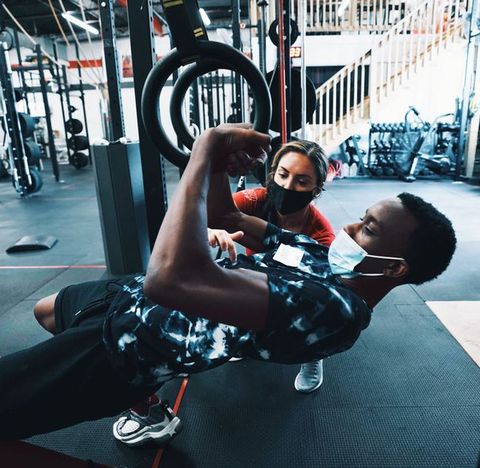
Some of the important paths to more diversity may be indirect, says Smith, who placed sixth in the 2020 Games. He hopes to see a rebuilding of the CrossFit media team. “If you’re not telling stories, then whatever the prevailing narrative is takes over,” he says. “I go to a lot of different boxes and it’s always been welcoming. I’ve met more members of the LGBTQ community, young and old, people with different views, through CrossFit.”
This is also why some people argue that CrossFit’s problem hasn’t been with the fitness methodology or what happens inside the boxes. It’s been at the corporate level. Gerlitz hired a third party, Diversity Solutions, to help with its inclusivity initiatives. “And we’re launching a diversity council,” she says.
“I’ve seen [diversity measures] be done badly by people who were well-meaning,” adds Roza. “We have to build inclusion into the institutional fabric of the brand. And what I’m hearing from people is ‘We want you to focus on race, but we also need to be more sensitive around people with different religions and belief systems, gender preferences and identities, body shapes, and more.’ ”
When a SEAL and a computer nerd meet, the SEAL will always have the upper hand, in coolness, toughness, life experience (even if the nerd ends up saving the SEAL later). And so it was that at their initial meeting at the ranch in June, Roza was “uh . . . reticent. I’m not usually a reticent guy, but I was, you know, throwing out new ideas,” he says via Zoom from CrossFit’s temporary HQ in Boulder. In the back of his mind, he assumed Castro was thinking, “Who the hell is this guy? What does he know? What does he know about CrossFit, the CrossFit Games, and live events in general?” Roza says. “To be fair, the answer would be zero. Zero-point-zero would be the right answer.
“But,” Roza says of Castro, “he was really cool and welcoming of outside perspectives.” Perhaps Castro was just buttering his new boss up for a big request: “He said, ‘We’ve got to do the Games and get it right,’ ” says Roza.
This was late June 2020, and major sports were starting to come back in pandemic-altered ways. Holding the Games, Castro believed, would be a first step toward reuniting the fractured community. It would show the sponsors who’d bailed that the new regime was committed to moving forward. The Games launched in late October at the ranch in a pandemic–conscious format.
With Glassman gone, HQ was able to scramble to gain back sponsors like Goruck, U. S. Army, Whoop, and Rogue. “We got CBS to come along as a broadcaster,” says Roza. Roughly 400,000 people tuned into the CBS broadcast, part of the 11.5 million total who watched the Games on TV and various streaming platforms, up 31 percent from 2019.
Castro believed that, under Glassman, he’d been held back from making CrossFit into one of the biggest sports in the world. Bigger than the UFC. “In our sport, we can have a majority of people who are watching the sport also going to affiliates and participating in the sport and involved in the community,” he says.
Roza has an objective of his own. “In ten years, my goal is to have 100 million people doing CrossFit,” he says. The competitions, already global, with the top 30 men and 30 women representing 15 countries, serve as an annual, international reminder that the WODs really work.
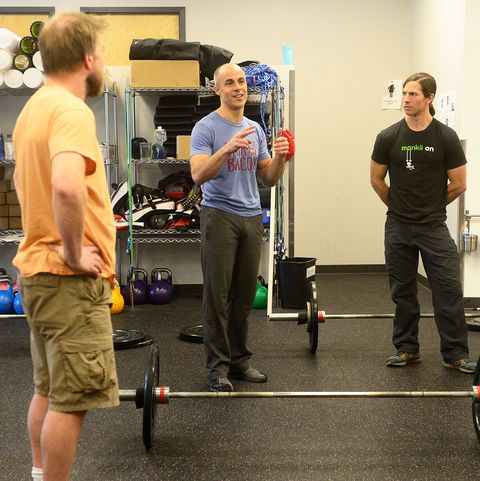
Building the competitive side of CrossFit, the two think, can also serve as a launching pad for a longer-term goal: pulling more people from different backgrounds into the fold. “Dave and I spent a lot of time thinking about how we can make the future Games even more inclusive for more people to participate,” says Roza. For the first time, the 2021 Games will include adaptive categories for people with disabilities, like the Paralympics.
But Roza will face a few business conundrums. A common experience among CrossFitters is looking for a “good” CrossFit box—a box with competent trainers, a friendly atmosphere, and an approach to the method that will push but not injure them. Which is why Royse’s letter called out CrossFit’s “incoherent brand identity.” “If you ask strangers on the street what CrossFit is, you’ll get infinitely varied answers,” Royse says. “Anybody walking down the street should be able to see a CrossFit gym and have a baseline expectation of what they will find.”
“CrossFit could be one of the biggest sports globally. The goal is 100 million people in ten years.”
High-intensity, functional-training gym chains like OrangeTheory and F45, Royse says, are gaining ground on CrossFit by delivering customers a predictable experience in all of their locations. “The beauty of CrossFit is that [the affiliates] are all different, but there needs to be some agreed-upon standards,” she says.
Roza says he understands the upsides of Glassman’s laissez-faire model. But taken to the extreme, it ignored many opportunities. He’s planning to create best practices, scalability, and robustness in the business through automation and information sharing. Affiliates will be networked so they can swap advice. (When running CrossFit Sanitas, he found that mothers bring in the most new members, whereas most CrossFit coaches try to attract amazing athletes.)
He’ll also develop a consumer app, and CrossFit will “use technology to translate information, so people don’t have to speak English to be CrossFitters.” Making concerted efforts to grow CrossFit around the globe, Roza says, will add a lot of different people and could get him to 100 million. Brazil, for example, saw its number of affiliates rocket by more than 50 percent in 2018, to 1,150.
But all these changes are happening in the context of a pandemic that created a massive ripple in the gym model. More people are now doing CrossFit at home and will be in the future. And any paid apps would have to offer a better product than what can be found online for free. WODwell, a free searchable database of thousands of CrossFit workouts maintained by the community, for instance, has seen more than double the traffic to its website during the pandemic. But is a religion a religion without the church?
Soon after his trip to the ranch, Roza called on another person. “Mutual friends connected us and said, ‘You guys should really talk,’ ” says Royse, who agreed to speak to the new CrossFit owner. The two, along with Gerlitz, spoke about Royse’s experience as an affiliate owner, her letter, the recent fallout, and what CrossFit plans to do to move forward. “They have a huge job ahead of them. A huge job,” Royse says. “I left my conversations with all of them thinking that I believe these to be good people. That’s a really positive change.” But she says she’s not immediately jumping back on as an affiliate. “I would like to come back. But not being an affiliate hasn’t hurt us at all. I can hire and have access to a more diverse collection of coaches. I’m looking for reasons to come back. But I need to see the systemic changes. They’re saying all the right things. We need to actually see it.”
This story appeared in the January-February 2021 issue of Men’s Health.
Source: Read Full Article
